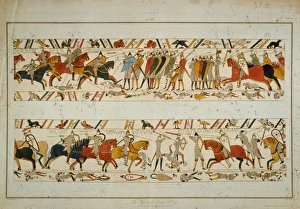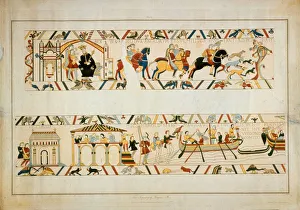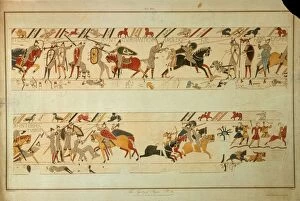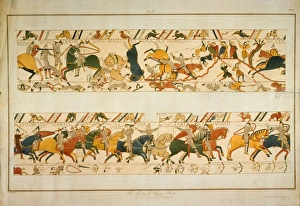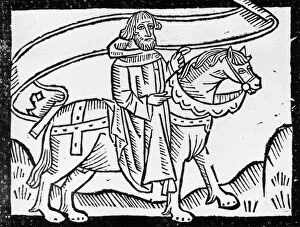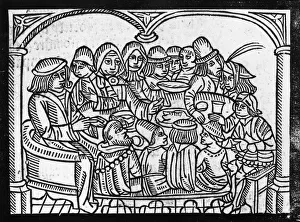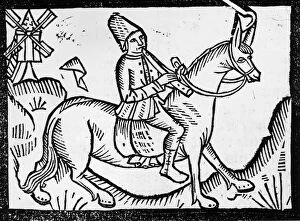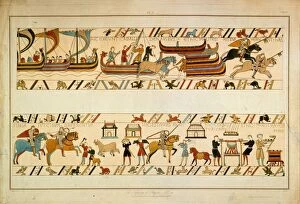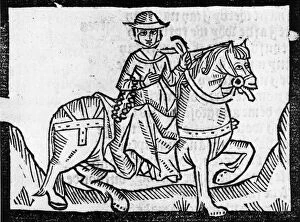Koes Collection
"Unraveling the Threads of History: Exploring the Epic Saga in the Bayeux Tapestry" The Bayeux Tapestry, a remarkable piece of medieval art
All Professionally Made to Order for Quick Shipping
"Unraveling the Threads of History: Exploring the Epic Saga in the Bayeux Tapestry" The Bayeux Tapestry, a remarkable piece of medieval art, weaves together intricate scenes that depict pivotal moments in history. Amongst these captivating images are glimpses into the tragic fate of King Harold II and his brothers Gyrth and Leofwine. In one scene, we witness the heart-wrenching demise of King Harold's brave siblings as they valiantly defend their land. Their sacrifice serves as a testament to their unwavering loyalty and courage. Another panel reveals the fateful moment when King Harold himself meets his untimely end on the battlefield. His noble spirit shines through even in defeat, forever etching his name into history. Before embarking on his ill-fated journey, Harold seeks counsel from King Edward the Confessor. This poignant exchange captures both friendship and duty intertwining amidst uncertain times. Bishop Odo of Bayeux plays a significant role throughout this tapestry narrative. As William the Conqueror's half-brother, he offers encouragement to squires who stand ready to fight for their cause—a stirring display of leadership during turbulent times. Amidst these tales of triumphs and tragedies lies an important transition in power. With Edward's passing comes Harold's ascension to kingship—an event that sets in motion a chain reaction leading to England's destiny being rewritten forever. As festivities ensue following William's victory at Hastings, Bishop Odo blesses Norman banquets with solemn grace—a symbolic gesture marking new beginnings while honoring those who fell along this tumultuous path. Yet not all interactions between enemies were hostile; here we find an unexpected act of compassion as future King Harold rescues two soldiers from William's camp—showcasing humanity amidst conflict-ridden landscapes.

